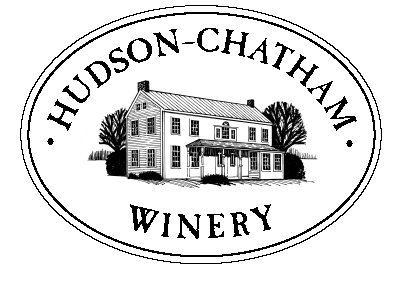
Changing weather patterns concern and challenge maple syrup producers; Eastern Ontario temperatures to rise about two degrees by 2045
Posted By Jenn Watt
Posted February 1, 2008
Posted By Jenn Watt
Posted February 1, 2008
The Lindsay Post
Maple syrup producers have a lot more to worry about than if the weather cooperates or if the syrup colour stays consistent; global warming and invasive plant species threaten the sugar bushes they harvest from and pose longer-lasting, more challenging dilemmas.
The Haliburton-Kawartha Maple Syrup Producers Association heard presentations from Barb Boysen and Eleanor Reed on both pressing concerns at its annual general meeting in Buckhorn last Friday.
Changing weather patterns due to global warming will increase temperatures in Eastern Ontario by about 2øC by 2045, Boysen told the group.
While that may not seem like big shift, in the maple syrup business, trees aren't good for sap until they are 40 to 50 years old, which makes long-term planning a must.
"As maple syrup producers, you know there is so much that can go wrong in your bush from climate, to different insects, different plants, different weather from year to year.
Climate change: just view it as the newest, biggest, bully on the block," said Boysen, who is a forest genetics specialist based at Peterborough's Forest Gene Conservation Association.
As global temperatures increase, the area suitable for maple syrup production moves further north, she said. So, when producers look at planting saplings in their sugar bushes, they should look to regions with temperatures similar to what Haliburton's will be in 40 years to find seeds.
"If you're doing any kind of planting and you want to introduce a new species to an old, abandoned farm, you would want to make sure that you were getting from your local nursery the right population. You would hope you didn't get seeds from further south or further north because there are populations of different species that are genetically programmed to act differently," Boysen said. She also distributed a report from Environment Canada outlining many challenges to syrup production as Ontario warms up.
"Atmospheric Influences on the Sugar Maple Industry in North America," by Don MacIver et al points out that over the past 50 years maple syrup production has moved from the United States to Canada due to rising temperatures.
"Fifty years ago the United States, primarily New England and New York, used to account for 80 per cent of the international maple syrup production, with 20 per cent in Canada, but today that trend is completely reversed," it reads.
Canada is now the largest producer of maple syrup in the world with "$155 million in production value in 2002."
"Climate parameters that impact maple syrup production include temperature, precipitation (timing, amount and acidity), snow cover and atmospheric carbon dioxide and ozone concentrations," the paper says.
"Climate parameters that impact maple syrup production include temperature, precipitation (timing, amount and acidity), snow cover and atmospheric carbon dioxide and ozone concentrations," the paper says.
In order for sap to flow - usually beginning in early March in the Kawartha-Haliburton region - the overnight temperature must be below freezing and the daytime temperature must be above freezing. Ideally, -5øC at night and 5øC in the day. The warmer it gets, the lower the quality and quantity of syrup.
"Preliminary data for Ontario shows that in 1960 the first date of maple syrup production, known as boil date, was March 24, but by 2002 this date had advanced to March 7," the paper says.
Further, syrup can be affected by summer droughts and mid-winter thaws. The drier the summer and fall, the poorer the sap. If the leaves drop prematurely, the starch they store is reduced. This starch is what produces the sap in the spring.
"Understanding, conserving and managing sugar bushes is more important than ever," Boysen said.
As if that wasn't enough to worry about, Eleanor Reed warned syrup producers of three invasive plant species that threaten their forests: garlic mustard, common buckthorn and dog-strangling vine.
"We could be more vulnerable because generally our sugar bushes are monocultures. Any time you have a monoculture, if there's an invasion of insect or disease, invasive plant or animal, you could have catastrophe in your forest," Reed said.
The three plants Reed told the group about are dangerous because they are aggressive and take over the floor of the forest, pushing out other plants and including maple seedlings.
There is also good reason to expect that if they're not already in our forests, they soon will be.
"[Dog-strangling vine] is in the Orono forest. If you drive through there when the seed is flying it's like driving through a snowstorm," Reed said.
"[Dog-strangling vine] is in the Orono forest. If you drive through there when the seed is flying it's like driving through a snowstorm," Reed said.
She also told the group about seeing a forest entirely taken over by common buckthorn, so thick that her children couldn't get through it.
"The good news is your sugar bush could be less vulnerable because you're there inspecting it regularly," she said. Reed advised producers to pull up the invasive species on first sight, unless it has already spread and then herbicide is necessary.
"Our sugar bush is highly valued by us because it's a moneymaker, sure, but we also love our sugar bush. We love it and we want to protect it."
The all-day conference included a speech by Neil Campbell on land trusts (a way to secure historically or ecologically special land from development for hundreds of years), a presentation by the president of the Ontario Maple Syrup Producers Association, and a trade show with equipment and maple product displays.

No comments:
Post a Comment